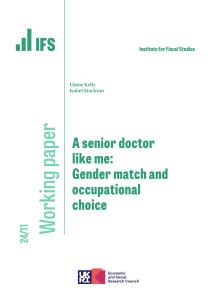In England, state support for older people with disabilities consists of a national system of non‐means‐tested cash disability benefits and a locally administered means‐tested system of social care. Evidence on how the combination of the two systems targets those in most need is lacking. We estimate a latent factor structural equation model of disability and receipt of one or both forms of support. The model integrates the measurement of disability and its influence on receipt of state support, allowing for the socio‐economic gradient in disability, and adopts income and wealth constructs appropriate to each part of the model.
We find that receipt of each form of support rises as disability increases, with a strong concentration on the most disabled, especially for local‐authority‐funded care. The overlap between the two programmes is confined to the most disabled. Less than half of recipients of local‐authority‐funded care also receive a disability benefit; a third of those in the top 10 per cent of the disability distribution receive neither form of support. Despite being non‐means‐tested, disability benefits display a degree of income and wealth targeting, as a consequence of the socio‐economic gradient in disability and likely disability benefit claims behaviour. The scope for improving income/wealth targeting of disability benefits by means testing them, as some have suggested, is thus less than might be expected.








